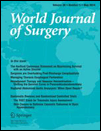Assessing Patterns of Practice of Sentinel Lymph Node Biopsy for Breast Cancer in Latin America
Electronic supplementary material: The online version of this article (doi:10.1007/s00268-013-2382-1) contains supplementary material, which is available to authorized users.
Abstract
Introduction
There is a lack information regarding how sentinel lymph node biopsy (SLNB) for breast cancer is carried out today in developing countries and how it was adapted. To rectify this situation we performed a pattern-of-practice survey amongst practicing surgeons in Latin America (LA).
Methods
A survey was developed to assess current surgical practice in breast cancer, use of SLNB, limitations to the implementation, training, technique variations, and observed adverse events. A total of 30 surgical associations and breast surgery societies in 18 Latin American countries were invited to participate. Surveys were distributed among member of these associations and 76.7 % of those contacted answered the survey. Responses were limited only to those who reported treating breast cancer patients.
Results
A total of 463 surgeons who manage breast cancer responded. Over 53 % of surgeons do not have sub-specialty training. Only 47.7 % have a high-volume case load, of which 87.8 % routinely perform SLNB. The main limitations perceived to the implementation of SLNB were a lack of resources/equipment (48 %) and training opportunities (33 %). Over 60 % reported that fewer than half of their patients were eligible for SLNB and 67.8 % reported that they were involved in teaching this technique to residents.
Conclusions
A significant proportion of surgeons that treat breast cancer cases in LA have not had sub-specialty training or manage a low volume of cases. Among those surgeons with a high-volume caseload, SLNB is routinely performed. SLNB training during residency represents an opportunity for improvement in the region.




